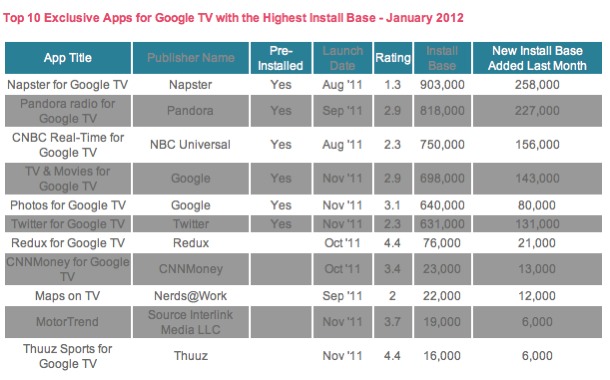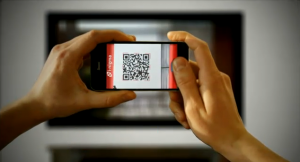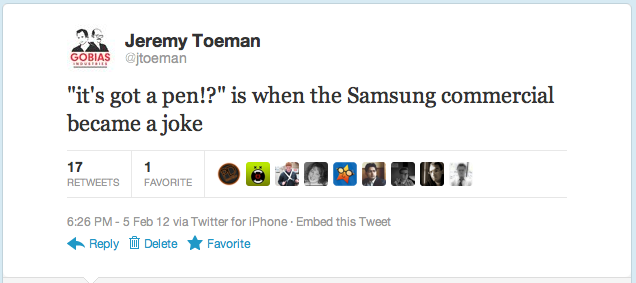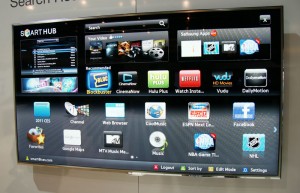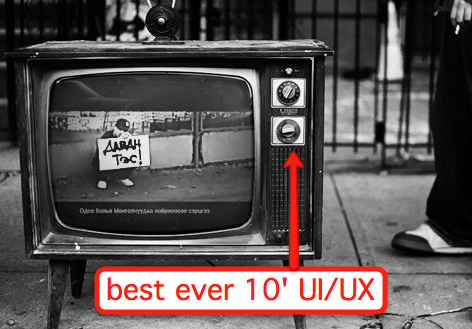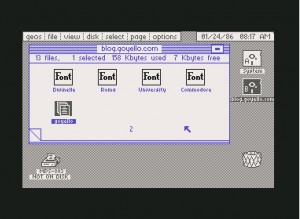So the Grammy’s unsurprisingly (I will explain why I say it that way in a moment) set all sorts of records for social TV. Just like the Superbowl did a few weeks ago. Just like the ___ did a few weeks before that. I call this a big yawner, but first, some definitions:
- Appointment TV: a TV show where the majority of the audience is watching live. The 5 primary examples are Reality Shows (American Idol, Amazing Race, etc), News (CNN, uh… CNN Headline News? I don’t know, televised news is just propaganda in my opinion anyway – but I digress), Sports (mostly hockey, particularly the Canadiens), Events (Oscars, Royal Weddings, etc), and “big episodes” of scripted television (Lost Series Finale, Game Of Thrones Season 2 Premiere, etc).
- Catch-up TV: everything that doesn’t fit into Appointment TV above. Literally. Every “typical” episode of every “typical” show is in the catch-up category, which means there is no particular driver for someone to watch it anywhere near to real-time. This is why I’m still on Weeds season 5, Entourage season 6, etc, and will catch up on things like Breaking Bad, Game of Thrones and others whenever I find the desire.
- Social TV: let’s do this SAT-style. Social TV : TV :: Social Media : Web. In other words, it’s a nebulous mess of “stuff you use things like Facebook and Twitter to do while watching TV”. It includes hashtags, check-ins, second screen, likes, and is a big jumbly undefined thing. And I have no problem with that.
So why do I say things like “unsurprisingly” and “yawner”? Because this is a burgeoning activity. We are at the very earliest stage of people using second screens whilst (yup, whilst) watching TV. I myself tweeted a couple of times during the Superbowl (really during the ads):
 This is an infinite increase over last year’s SuperBowl. I didn’t watch the Grammy’s, but had I, I likely would’ve tweeted. And this isn’t just about me, it’s a pretty universal trend. Why? Because Twitter, the platform we are using to measure Social TV as a concept, is still growing. So anything measuring a growing service with growing use and calling the outcome “record-setting” is really just fulfilling an exercise in redundancy. Every new instance of appointment TV tweeting will outpace all previous instances, until Twitter stops growing.
This is an infinite increase over last year’s SuperBowl. I didn’t watch the Grammy’s, but had I, I likely would’ve tweeted. And this isn’t just about me, it’s a pretty universal trend. Why? Because Twitter, the platform we are using to measure Social TV as a concept, is still growing. So anything measuring a growing service with growing use and calling the outcome “record-setting” is really just fulfilling an exercise in redundancy. Every new instance of appointment TV tweeting will outpace all previous instances, until Twitter stops growing.
But really, that’s all just a sidepoint. My issue, concern, and question, is whether or not there’s any value whatsoever in any of this for catch-up TV. Do I care about tweets someone sent during an episode of House from last year? Or last week? Or even 10 minutes ago? I don’t, and I don’t understand why someone else would either. Nor do I care about what someone is watching right now unless I too can (and should) watch the same thing, at the same time. Heck, I hate seeing the promos to text in my vote (to Top Chef, my guilty pleasure show) when I’m seeing an episode 4 months after it aired.
I don’t see a solution to this conundrum. To be clear, I’m not questioning will social media impact TV behaviors – that will certainly happen. Further, as evidence is mounting that catch-up TV is growing steadily and will inevitably outpace real-time/appointment TV, I see the window somewhat shrinking for what’s currently called “Social TV.” But that shouldn’t really surprise anyone, as it’s such an early stage in the evolution of TV. And if you think about it in evolutionary terms, TV is just learning about making fire now, and the wheel is probably a few years away…



